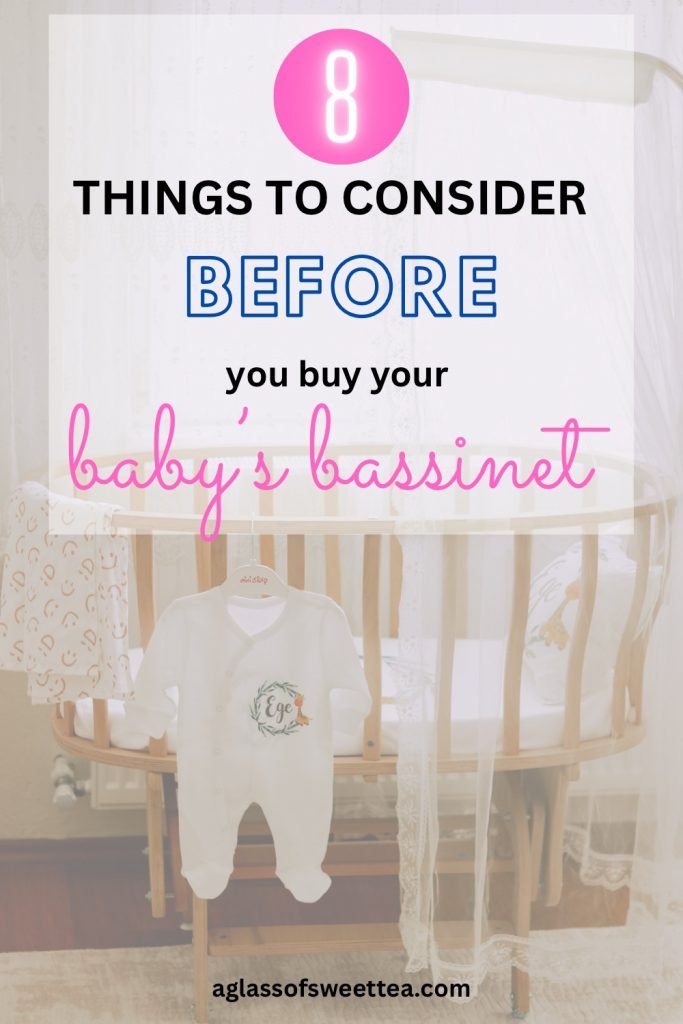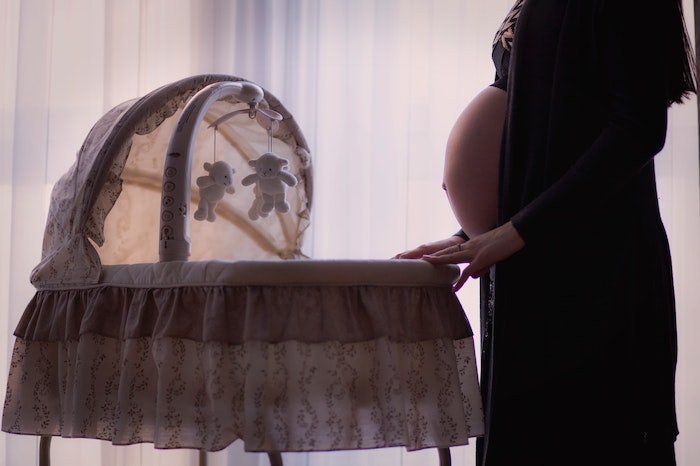When I chose Plum’s bassinet, I was certain it was what I wanted.
My last-trimester-crappy-feeling-self just wanted to make a solid choice, as quickly as possible, and get it over with.
But, after I bought it, something happened; I started to notice a bunch of really neat bassinets that I hadn’t come across during my search. They had all the bells and whistles.
Suddenly, I wasn’t so sure that I’d picked the right bassinet. But it was already home, and assembled, so I brushed the thought aside.

Now, here I am to share a few things for you to think about, so you can choose your baby’s bassinet with confidence. This is the list, I wish I had.
Tip: Once you’ve read through the list, go back and rank each item in order of importance.
But first, a word on sleep safety.
Sleep Safety
Sleep safety is very important for baby’s health and for your peace of mind. There are definite actions you can take to create the safest sleep environment possible, thereby reducing the risk of sleep-related infant death.
According to the American Academy of Pediatrics –
AAP
- Place infants on their backs for sleep in their own sleep space with no other people.
- Use a crib, bassinet, or portable play yard with a firm, flat mattress and a fitted sheet. Avoid sleep on a couch or armchair or in a seating device, like a swing or car safety seat (except while riding in the car).
- Keep loose blankets, pillows, stuffed toys, bumpers, and other soft items out of the sleep space.
- Breastfeed if possible, and avoid smoking.
Here is their policy explained. I encourage you to take a moment to review it.
And now, the list.

This post contains affiliate links. If you make a purchase using one of these links, I could earn a small fee, at no additional cost to you.
Bassinet Types and Features
- Mobility
Bassinets come with a few different option for wheels – none, two, and four.
Bassinets with wheels make it easy to take baby where you go.
A good alternative for taking baby where you go is a baby lounger. Baby loungers are only to be used while baby is awake, never while sleeping. If baby falls asleep in their lounger, move them to a safe sleeping environment right away.
2. Cost
What’s your budget for a bassinet?
Cost is relative but –
- the most economical models range from $55-$110
- a nice mid-range bassinet range from $160-240 (these have a few bells and whistles)
- fancier models are $350-$600 (these have even more bells and whistles)
- high-end, or luxury bassinets, are $600+
3. Convertible / Multi-Use / Combo
These are one-stop-shops that your baby can grow into.
A convertible bassinet has an upper bassinet area, a playard on the bottom, and sometimes, a changing table.
As baby grows, the bassinet portion can be removed for use as a playard, which they can also sleep in.
You get more bang for your buck because you don’t have to purchase another sleep environment after 4-6 months when baby outgrows their bassinet.
4. Style
White and gray are common colors used for bassinets, but they’re not the only ones. As for materials, wood, wicker and mesh are the most commonly used ones.
Do you have a color, or material, preference?
You might also consider whether or not you want a canopy, and what your shape preference might be (circular, square, ovular, or rectangular).

5. Size
From mini to full-sized models, there is a perfectly-sized bassinet for your space.
In your home, how much space are you able to allot for a bassinet?
If you have a modest amount of space to work with consider a mini-bassinet.
If that doesn’t fit the bill, another option is a folding bassinet. This is exactly what it sounds like – you fold it up, and put it away when its not in use.
As a bonus, some folding bassinets are suitable for travel.
6. Storage Area
Whether large, or small, many bassinets include space to house a couple of items. Side pockets, attached caddies, and bottom bins are common areas.
How important is it for your to be able to store items on the bassinet? Will you only need a small area to store couple of things, or a larger area to store many items?
If the bassinet you’re eyeing doesn’t come with storage, consider a hanging diaper caddy to bridge the gap.
If on-bassinet storage doesn’t matter, a changing table with storage, diaper caddy, or rolling diaper cart might be up your alley.
7. Motion
Motion bassinets rock, play music or white noise, vibrate, and light up, all at the push of a button.
Some even have cry-detection, springing themselves into action to soothe your little one.
And, for my low-tech honeys, manually rocking bassinets are still around.
8. Bedside Sleeper / Co-Sleeper
A bedside sleeper is an alternative to bedsharing, because baby is superclose without being in the bed with you.
Baby sleeps in their bed and you sleep in yours, with your beds side-by-side.
They’re said to make it easier to comfort, feed, and bond with your baby.
But, not everyone is sold on these.
Final Thoughts
Now that you have a list of common bassinet types and features, and your final rankings decided, you’re ready to choose the right bassinet for your baby.
Happy Hunting!
~Ash
P.S. Bassinets aren’t just for sleeping, they stroll too.
